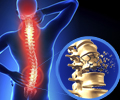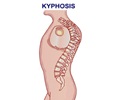Breakthrough alert! High-frequency spinal stimulation reduces spasms, enabling better mobility for spinal cord injury patients.

- High-frequency electrical stimulation can reduce muscle spasticity and aid locomotion recovery in spinal cord injury patients
- This innovative approach minimizes overreactive motor circuits safely, providing relief from stiffness and spasms
- Clinical trials show promise, with potential expansion to other neurological conditions on the horizon
Muscle spasticity affects over 70% of spinal cord injury patients. High-frequency stimulation could turn this challenge into a stepping stone toward mobility recovery! #spinalcordinjury #innovation #medindia’
High-Frequency Stimulation Combats Paralysis and Spurs Locomotion Recovery
"We discovered that high-frequency electrical stimulation of the spinal cord, combined with the usual continuous, low-frequency spinal stimulation, is effective during rehabilitation after spinal cord injury, overcoming muscular stiffness and spasms in paralyzed patients and effectively assisting the patients during locomotion," says Silvestro Micera, professor at EPFL's Neuro X Institute and Scuola Sant'Anna."This is a safe and effective surgical approach that provides a fresh viewpoint in the treatment of individuals with severe spinal cord injury. We intend to broaden the indications to include various clinical disorders that will be defined during the following month. Pietro Mortini, Head of the Neurosurgery and Stereotactic Radiosurgery Unit at IRCCS Ospedale San Raffaele (Milan) and full professor of Neurosurgery at the University Vita-Salute San Raffaele, expresses his gratitude to the patients who put their trust in us.
Electrical stimulation of the spinal cord is an indirect technique to access the motor neurons that control muscle movement. This is because sensory neurons on the back of the spinal cord connect with motor neurons.
High-Frequency Stimulation Helps Reduce Muscle Spasticity After Spinal Cord Injury
In muscle spasticity is associated with overreactive spinal sensory-motor pathways. In reality, the spinal cord is naturally overreactive to stimuli, which is beneficial because it allows for quick responses. Normally, the brain balances out the overreactivity by inhibiting the motor circuits. Spinal cord injury causes the patient to lose brain messages as well as inhibitory processes. The research team discovered that high-frequency spinal cord stimulation is an artificial and safe technique to reduce over-reactivity in individuals without causing discomfort."At this stage, we can only speculate that high-frequency stimulation acts as a kilohertz block that prevents muscle spasticity," Micera adds.
References:
- Overcoming spasticity to help paraplegics walk again (DOI: 10.1126/scitranslmed.adp9607)
Source-Medindia












